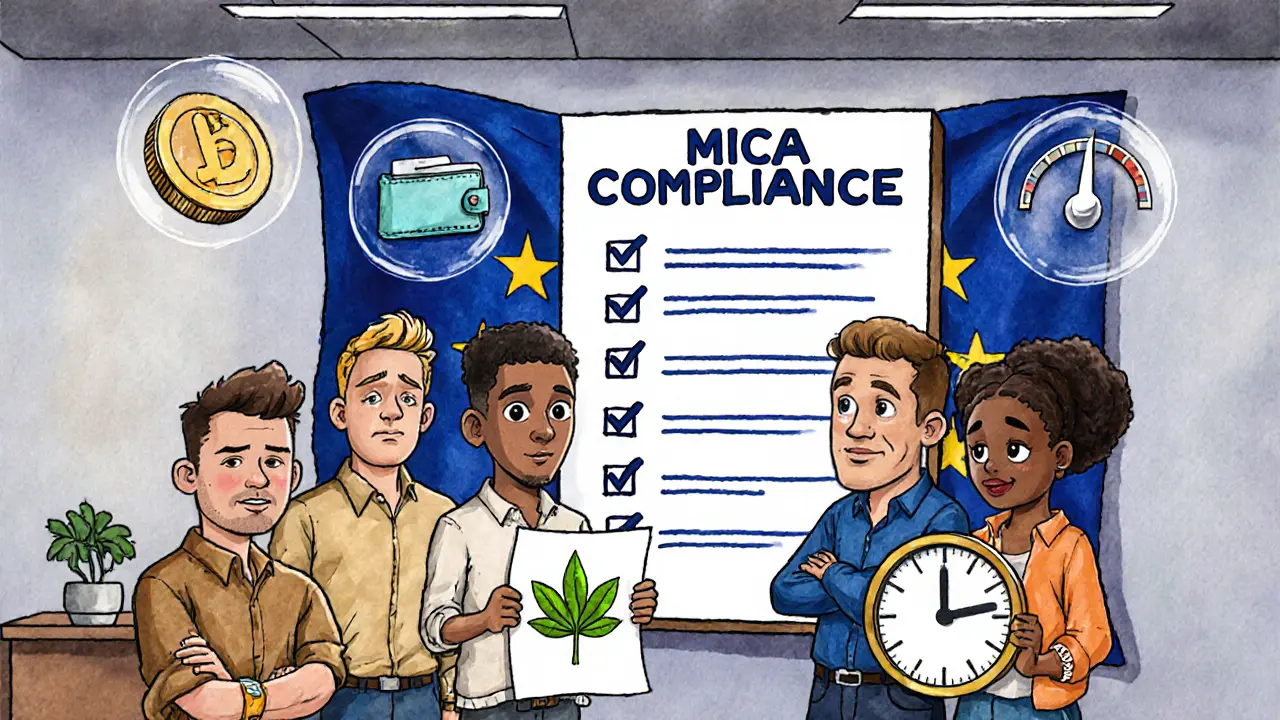MiCA Regulation: What It Means for Crypto Users and Exchanges
When you hear MiCA regulation, the Markets in Crypto-Assets Regulation, a comprehensive EU law designed to bring clarity and safety to digital asset markets. Also known as EU Crypto Law, it’s not just another rulebook—it’s the first time a major economy has laid out clear, enforceable rules for everything from stablecoins to decentralized exchanges. Before MiCA, crypto in Europe was a patchwork of conflicting national laws. Some countries welcomed it. Others banned it. Now, if you’re running a crypto exchange, launching a token, or even just holding USDT, MiCA applies to you—whether you’re in Germany, Spain, or Poland.
MiCA regulation doesn’t just target big players. It touches crypto exchanges, platforms that let users buy, sell, or trade digital assets, now required to be licensed and transparent under EU law like VirgoCX and COEXSTAR, which already follow strict rules. It forces stablecoins, crypto tokens pegged to real-world assets like the euro or dollar, now subject to reserve audits and issuer accountability like USDT and EURS to prove they’re backed. Even crypto airdrops, free token distributions often used to grow communities, now need clear disclosures about risks and token utility can’t hide behind vague marketing. The SPAT, BUTTER, and ZooCW airdrops you see online? Under MiCA, they’d need to say exactly what you’re getting, how it’s valued, and what happens if the project fails.
This isn’t about killing innovation. It’s about stopping scams. Look at Wavelength or AlphaX—fake or dead platforms that vanished with users’ money. MiCA requires exchanges to be registered, audited, and accountable. It forces projects to publish whitepapers that aren’t just buzzwords. It gives regulators real power to shut down fraud before it spreads. And for users? It means less guesswork. If you’re trading on a licensed EU exchange, you know they’re not just a website with a logo. They’re legally responsible. If you’re holding a token, you can check if it’s registered under MiCA. No more guessing if a project is real.
That’s why the posts below matter. You’ll find real stories: how Kazakhstan cracked down on mining, how Pakistan bypassed banking bans, how Cambodia controls crypto without banning it. These aren’t just country reports—they’re case studies in what happens when regulation meets real-world crypto use. Some of these places are ahead of MiCA. Others are falling behind. And every single one shows why clear rules aren’t the enemy of crypto—they’re the only thing keeping it alive.
